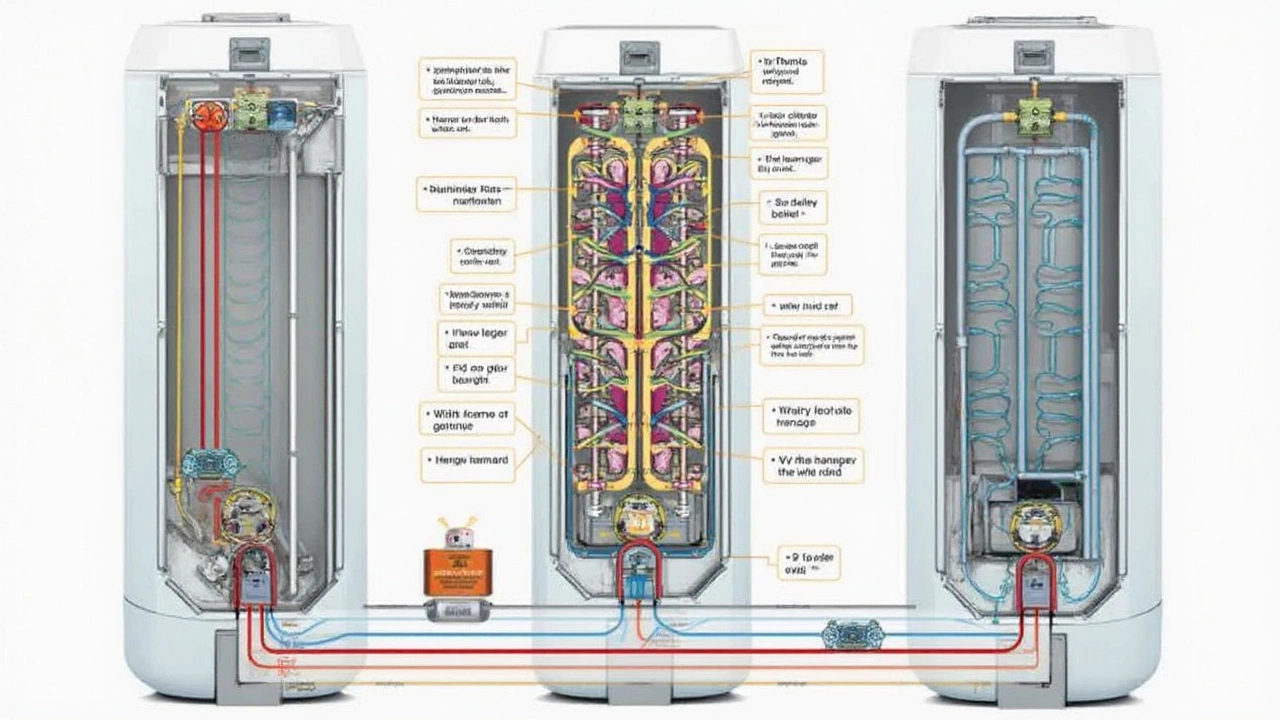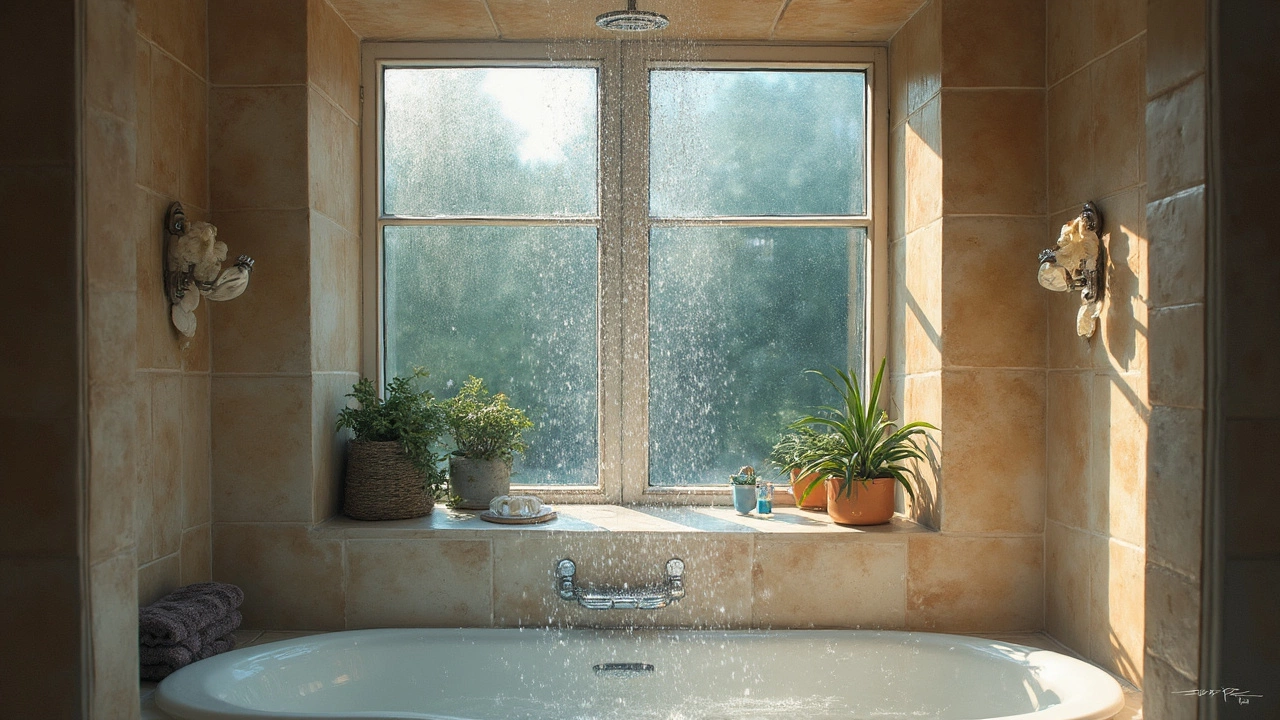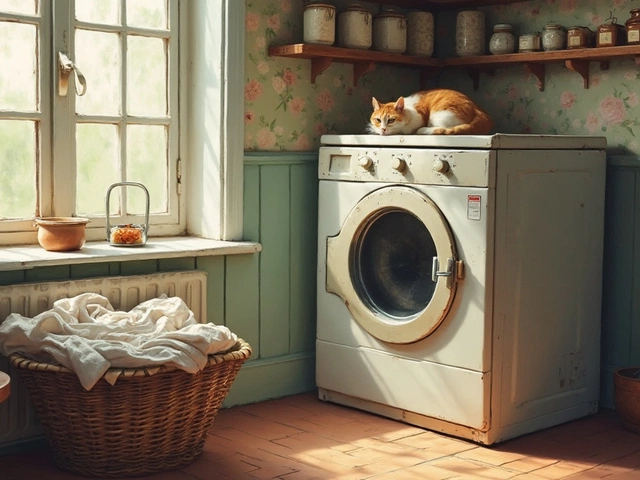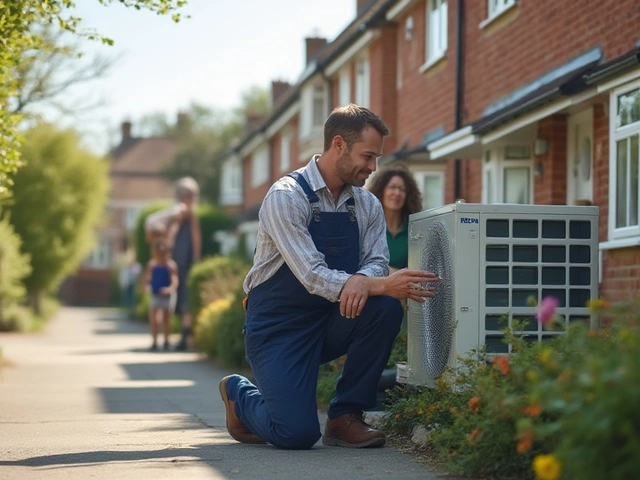Ever hopped into the shower, eager for a soothing hot wash, only to be greeted by a chilling shock? Yeah, not fun at all. The good news? You can often fix this issue without too much hassle. First things first, we need to figure out what's gone wrong. Most of the time, the culprit is the water heater, but there might be a few other sneaky problems hiding in the plumbing.
Before you start poking around, make sure to check if the lack of hot water is affecting just the shower or the whole house. If it's just the shower, you're probably dealing with a localized issue. But if the entire house is in cold mode, it's definitely pointing towards the water heater. Let's get this sorted and bring the comforting warmth back to your shower routine.
- Common Causes of No Hot Water
- Checking Your Water Heater
- Adjusting Temperature Settings
- Fixing Minor Issues Yourself
- When to Call a Professional
Common Causes of No Hot Water
Finding yourself without any hot water can be more than just a minor annoyance. Luckily, the usual suspects are pretty common, and you can often nail down the issue quickly. Let's dive into some of the common causes of no hot water that might be affecting your shower.
First on the list is a malfunctioning water heater. If you're experiencing cold showers all over your house, check the unit. Water heaters can have issues like faulty thermostats, broken heating elements, or even a tripped circuit breaker. If you have a gas water heater, the pilot light might have gone out. Kinda like when you forget to turn on the oven and wonder why your lasagna isn't baking.
Next up, sediment build-up in your tank. Over time, mineral deposits can accumulate, especially in areas with hard water. This build-up can insulate the water from the burner, affecting how quickly it heats up. You might not have signed up to clean out your water heater's belly, but flushing out the tank once or twice a year can prevent this.
Then there's the temperature setting. We all assume it's magic, right? But in reality, it might be set too low. Check the thermostat on your water heater. It might have been turned down, maybe after a vacation or to save on energy bills.
| Issue | Solution |
|---|---|
| Water heater malfunction | Inspect and repair or replace parts |
| Sediment build-up | Flush the tank |
| Temperature settings | Adjust the thermostat |
Lastly, consider plumbing issues. If your house has older plumbing, pipes may be corroded or there could be a problem with the shower valve itself. If only one fixture is affected, that's a clue that it might not be the water heater at all.
Understanding these potential issues can help you pinpoint why there's no hot water flowing in your shower, allowing you to take swift action. If troubleshooting doesn't work, it may be time to call in a pro.
Checking Your Water Heater
Alright, let's get to the heart of the matter: your water heater. If you've got no hot water in the house, this is the first place you'll want to look. Start by heading to where your heater is located—usually in a basement, garage, or a designated closet.
Before doing anything, make sure the power supply to the heater is on. Sounds basic, but sometimes it's just a tripped circuit breaker. Locate your home's breaker panel and see if the water heater's switch is in the off position. Flip it back on if that's the case.
If your heater is powered by gas, check the pilot light. This tiny flame helps ignite the gas, warming the water. To check, find the access panel at the bottom of the heater. If the pilot light's out, you'll need to relight it following the manufacturer's instructions, usually located on the unit.
Next, take a look at the thermostat. Many heaters have a dial you can turn to set the temperature. The recommended setting is around 120°F (49°C) for safe and efficient use. Adjust it if it's set too low. Sometimes the fix is as simple as spinning that dial up a notch.
| Common Water Heater Issues | Signs | Quick Fix |
|---|---|---|
| Pilot Light Out | No hot water, gas smell | Relight pilot |
| Broken Thermostat | Temperature fluctuations | Adjust temperature dial |
| Tripped Circuit Breaker | Complete shutdown | Reset breaker |
If these quick checks don't solve the problem, your heater might have a deeper issue like a faulty heating element or sediment buildup. These problems might require a professional touch. But don't worry, you gave it your best shot!

Adjusting Temperature Settings
If your shower's putting out cold water, it's time to give those temperature settings a quick check. Water heaters have a thermostat, and if it's set too low, you're gonna be in for an icy surprise. Most water heaters have an ideal temperature range between 120°F and 140°F. Anything lower, and it won’t seriously heat the water. Anything higher? Well, that could mean scalding water, which isn't cool either.
Adjusting it is pretty straightforward. Here's how you do it:
- First, make sure you've turned off the power or gas supply to your water heater. Safety first, right?
- Locate the thermostat. For electric heaters, it’s usually behind a small panel. Just unscrew it with a screwdriver. Gas heaters often have the dial outside, so they're a bit easier.
- Once you’ve got access, use a flathead screwdriver to adjust the temperature dial to something between 120°F and 140°F. Don’t go wild with it; small tweaks make a big difference.
- Secure everything back and restore power or gas to the heater. Wait a little while for things to heat up, then test the water again.
If you're finding yourself needing to adjust this often, consider the age of your system. Older units might struggle to maintain consistent temperatures, signaling a need for replacement rather than constant adjustments.
This simple adjustment can be just what you need to get that refreshing hot shower you’ve been dreaming of. If the problem persists, though, you might have to dig deeper into potential issues with the unit—like sediment buildup or a faulty thermostat.
Fixing Minor Issues Yourself
Alright, let's roll up those sleeves and tackle some of these minor issues that might be causing the hot water glitch. These fixes are simple and often enough to get you back to enjoying a warm shower without reaching out to a plumber.
First up, let's check the thermostat. If your water heater's temperature setting is too low, no wonder you've been dealing with chilly showers. The magic number here is typically around 120°F (49°C). Anything lower might not give enough heat, and anything higher can be a safety hazard. Just find your water heater's thermostat (usually near the bottom) and adjust it if needed.
Next, let's inspect the pilot light, applicable mainly if you've got a gas water heater. An unlit pilot light means no heat. Light it up by following your heater’s guide; usually, it's just a matter of turning the valve to 'Pilot', lighting it up with a match or lighter, and holding it until the flame stays put.
If you're using an electric water heater, check the circuit breaker. Make sure it's not tripped. Electric water heaters might sometimes trip the circuit breaker after a surge or if there's an overload. Flip it back on if that's the case.
There's also the possibility of a buildup of sediment in the tank. Over time, minerals from water can settle at the bottom of your heater, making it less efficient. To fix this, drain the tank. Here's how:
- Turn off the water heater and let it cool for a bit.
- Connect a garden hose to the drain valve (usually at the bottom).
- Open the valve and let the water and sediment flow out.
- Close the valve, remove the hose, and turn the heater back on.
This quick flush might just be what you need to get things running smoothly again.
A handy tip here: Do this every six months to keep the tank healthy! So, these are the basic steps to solve the no hot water mystery yourself. Easy fixes like these often do the trick, but if you're scratching your head and still no dice, it could be time to slide to the next section or, gulp, possibly call a pro.

When to Call a Professional
Alright, you've tried poking around a bit, but still no luck with the hot water. It's easy to get in over your head, so let's chat about when it makes sense to bring in the experts. Sometimes, the problem is more complex than it seems, and fiddling around too much could make it worse—or worse, void your warranty!
First, if you're dealing with a situation where the water heater is leaking, it's best not to delay. Water leaks can quickly escalate to serious damage if not handled swiftly and correctly. Certain repairs, like replacing heating elements or dealing with electrical components, also require a professional touch. You don't want to risk an electric shock or further damage your system.
Do you live in places with hard water? This can lead to sediment build-up in your water tank, reducing efficiency and lifespan. If you notice strange noises like banging or popping sounds, that could be the sediment talking! It might need a professional clean-up to ensure everything's running smoothly again.
Also, if you're not getting any power to your water heater or the pilot light won't stay lit, these could be signs of deeper electrical or gas issues. A professional will have the tools and knowledge to safely and effectively tackle these challenges.
Finally, if you've done everything you can and the water still runs cold, it's time to think about the bigger picture. Experts can assess whether your unit has reached the end of its life. Remember, while some fixes feel doable, others require a pro's guarantee to avoid ending up in over your head—or worse, with a pool in your basement. So, when in doubt, calling a professional can save you time, trouble, and money down the road.





